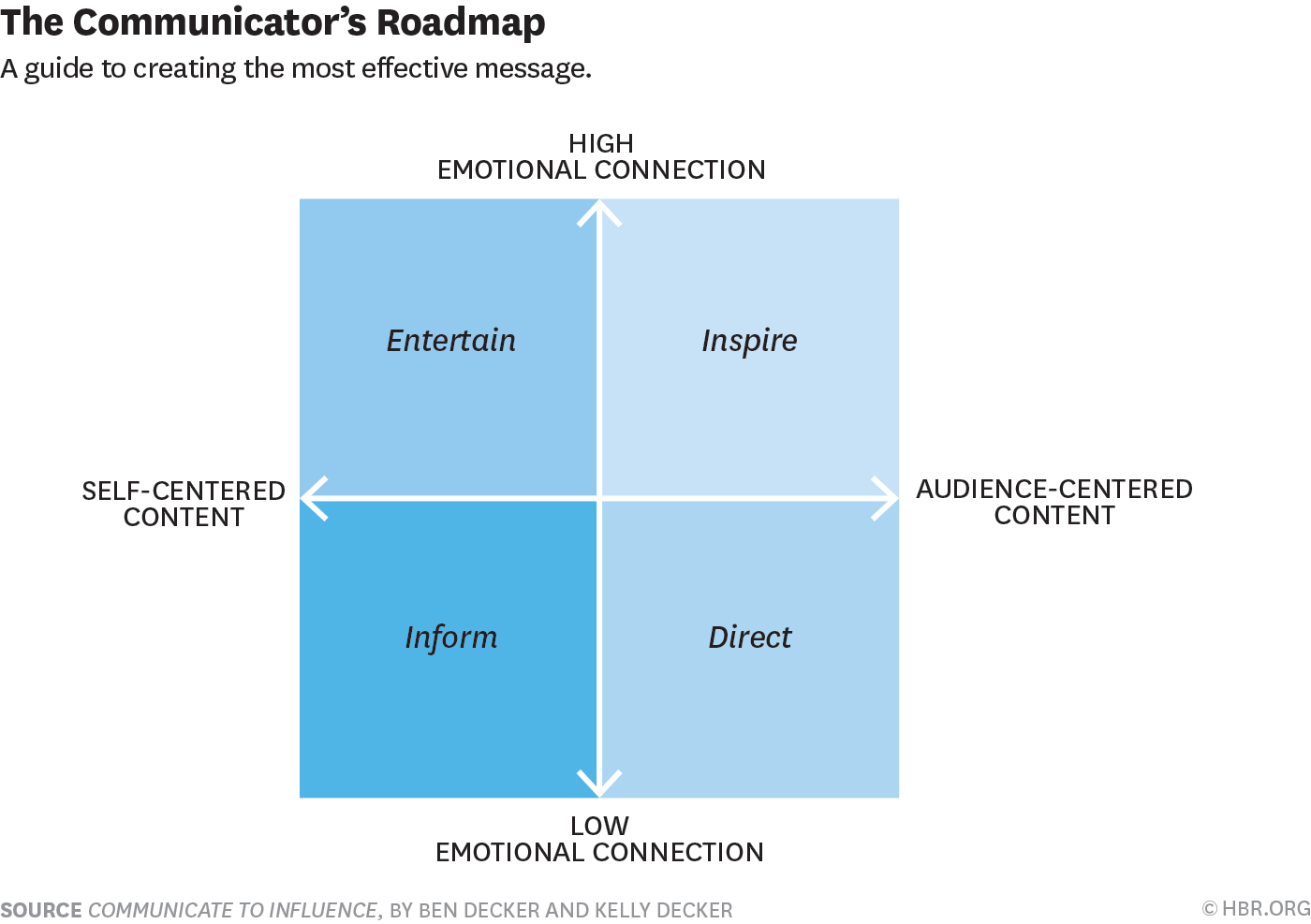Good article here from the team behind Decker Communications. Let’s start with an essentially-important pull-quote, shall we?
The corporate communications team had already been churning out emails highlighting new expense procedures, sales process changes, escalation flows, etc., but this wouldn’t engage employees. When a message comes from above, it has to be adapted at every level; otherwise, it’s just a directive. What made the great managers stand out was their ability to tailor the new vision to each level of direct reports. When they shifted the message to be audience-centered—by explaining why each team should personally care about the changes—they were able to motivate a positive, self-propelling response from team members. They became part of the cause.
This is another in a long line of things I’ve never understood about how corporate cultures run. To wit:
- We spend tons of time thinking about messaging to our customers and clients.
- We spend almost no time thinking about our messaging to our employees.
I understand where that attitude emanates from — namely, the idea that your customers and clients are what makes you the money — but it still doesn’t fully make sense. Employees are the people who work on branding, content, product, marketing, sales, etc. You need them to be on the same page. If they’re not, it’s hard to make money. If they’re really not, they leave. Then you’re down a training wormhole, etc.
For the visually-inclined, there’s this:
You’re actually trying to get to that top box — Inspire — by combining a high emotional connection with audience-centered content.
Now go back and look at that pull quote above, OK?
Oftentimes, CEOs have a new idea and they just roll out the idea in the same way to every constituency. This is logical in the sense that CEOs and other senior executives are really busy people, and they don’t really have the time (or perceive themselves to have the time) to tailor messages for marketing, product, sales, etc.
Here’s the rub on that: CEOs have people under them who do have the time — and if they say they don’t have the time, they’re lying and just taking a hit off the busy bong — to craft those messages. HR is an example, although most stuff that comes from HR, people probably ignore. Marketing is another. Admins are another. Editorial, etc. There are numerous options.
You actually do need to tailor messages — because anything that comes down from on-high is automatically perceived in two ways by most people:
- “That’s more work for me!”
- “That seems to be pointing at that department, but it screws my department!”
The real answer here is “Give up how busy you are and take time to explain things to people,” but another visual representation of that concept would be …
This chart above is really basic — most people would see this in a presentation and kind of groan, I think — but oftentimes, basic is extremely important to most people. Inspire is important, but so is Entertain. Without those two, you’re never going to capture attention of others or drive them where you want them to go. (For more on capturing attention, go here. For more on entertaining and contextualizing in presentations, go here.)
I’ve talked about maybe the basic, core problem here a couple of times: we’re about 70 years past the end of WW2 and the big business boom of the United States, so we’ve got about seven decades of experience and three or four generations through the workplace. Communication has almost always been terrible, and yet, people and companies have still made money.
As a result, the whole concept of “communication” and “effective flow of information” are viewed as soft skills. They don’t help you make money — and, well, money is the goal, right? (It’s actually not.) But that’s why people don’t prioritize them. (I would guess.)
What do you think about “audience-centric messaging?” Could it work, or is it all buzzwords?


